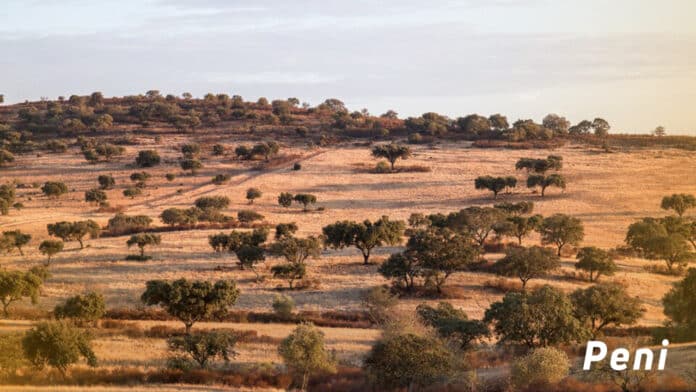South Sudan, the youngest country in the world, is blessed with fertile land and a favourable climate for agriculture. Agriculture plays a vital role in the country’s economy, contributing to its GDP and providing employment opportunities for a sizeable portion of the population.
In this article, we will explore South Sudan’s top revenue-generating crops and unique agricultural practices that have helped the country thrive in the agricultural sector.
Introduction
South Sudan, located in East-Central Africa, has a predominantly rural population engaged in agriculture. The country’s agricultural sector is characterized by small-scale farming, with subsistence farming being the primary mode of production. However, in recent years, there has been a shift towards commercial agriculture, driven by the demand for cash crops both domestically and internationally.
Cash Crops in South Sudan
1. Gum Arabic
Gum Arabic is one of the most important cash crops in South Sudan. It is derived from the Acacia Senegal tree and is used in various industries, including food, pharmaceuticals, and cosmetics. South Sudan is known for producing high-quality gum Arabic, which is in high demand globally. The country’s vast tracts of land and suitable climate make it an ideal location for gum Arabic cultivation.
Key points about Gum Arabic:
- South Sudan is one of the largest producers of gum Arabic in the world.
- Gum Arabic production provides income for thousands of small-scale farmers in the country.
- The gum Arabic industry has the potential to contribute significantly to South Sudan’s export earnings.
2. Sesame
Sesame is another lucrative cash crop in South Sudan. The country’s favourable climate and fertile soil make it an ideal location for sesame cultivation. Sesame seeds are widely used in the food industry, particularly in the production of cooking oil and tahini. South Sudan’s sesame production has been steadily increasing, and the crop has become an important source of income for many farmers.
Key points about Sesame:
- South Sudan’s sesame production has the potential to meet both domestic and international demand.
- The government has been actively promoting sesame cultivation as part of its agricultural development strategy.
- Sesame farming provides employment opportunities for rural communities and contributes to poverty reduction.
3. Cotton
Cotton is a traditional cash crop in South Sudan, with a long history of cultivation. The country’s warm climate and fertile soil create favourable conditions for cotton farming. Cotton production in South Sudan has the potential to contribute significantly to the textile industry, both domestically and internationally. However, the sector faces challenges such as limited access to credit, inadequate infrastructure, and low productivity.
Key points about Cotton:
- South Sudan has the potential to become a major player in the global cotton market.
- The government is implementing measures to improve cotton production and attract investment in the sector.
- Cotton farming can provide employment opportunities and improve the livelihoods of rural communities.
Unique Agricultural Practices in South Sudan
Apart from its cash crops, South Sudan also has unique agricultural practices that have been passed down through generations. These practices are deeply rooted in the country’s culture and have proven to be effective in maximizing agricultural productivity. Let’s explore some of these practices:
1. Flood Recession Farming
Flood recession farming is a traditional agricultural practice in South Sudan, particularly in the Nile floodplain areas. During the rainy season, the Nile River floods, depositing nutrient-rich sediment on the floodplains. Farmers take advantage of this natural phenomenon by cultivating crops on the fertile soil left behind after the floodwaters recede. This practice allows farmers to grow crops without the need for artificial irrigation or fertilizers.
Key points about Flood Recession Farming:
- Flood recession farming is a sustainable and cost-effective method of agriculture.
- It helps farmers maximize their yields and reduce their dependence on external inputs.
- This practice is deeply ingrained in the cultural heritage of South Sudan and has been practised for centuries.
2. Agroforestry
Agroforestry is another unique agricultural practice in South Sudan. It involves the integration of trees, crops, and livestock on the same piece of land. This practice has multiple benefits, including soil conservation, improved water management, and increased biodiversity. Agroforestry systems in South Sudan often include fruit trees, such as mangoes and citrus, which provide additional income for farmers.
Key points about Agroforestry:
- Agroforestry helps improve soil fertility and reduces the risk of erosion.
- It provides a diversified source of income for farmers through the sale of tree products.
- Agroforestry systems contribute to climate change mitigation by sequestering carbon dioxide.
3. Community-Based Seed Banks
Community-based seed banks are an innovative approach to seed conservation and exchange in South Sudan. These seed banks are managed by local communities and serve as repositories for traditional crop varieties. Farmers can deposit their seeds in the seed banks and withdraw them when needed. This practice helps preserve traditional crop diversity and ensures locally adapted seeds are available for future planting.
Key points about Community-Based Seed Banks:
- Community-based seed banks promote the conservation of traditional crop varieties.
- They help farmers adapt to changing climatic conditions by providing access to diverse seed options.
- These seed banks play a crucial role in maintaining food security and preserving cultural heritage.
Conclusion
South Sudan’s agricultural sector holds immense potential for economic growth and poverty reduction. The country’s top revenue-generating crops, such as gum Arabic, sesame, and cotton, have the capacity to contribute significantly to its export earnings. Additionally, unique agricultural practices like flood recession farming, agroforestry, and community-based seed banks showcase the ingenuity and resilience of South Sudanese farmers.


